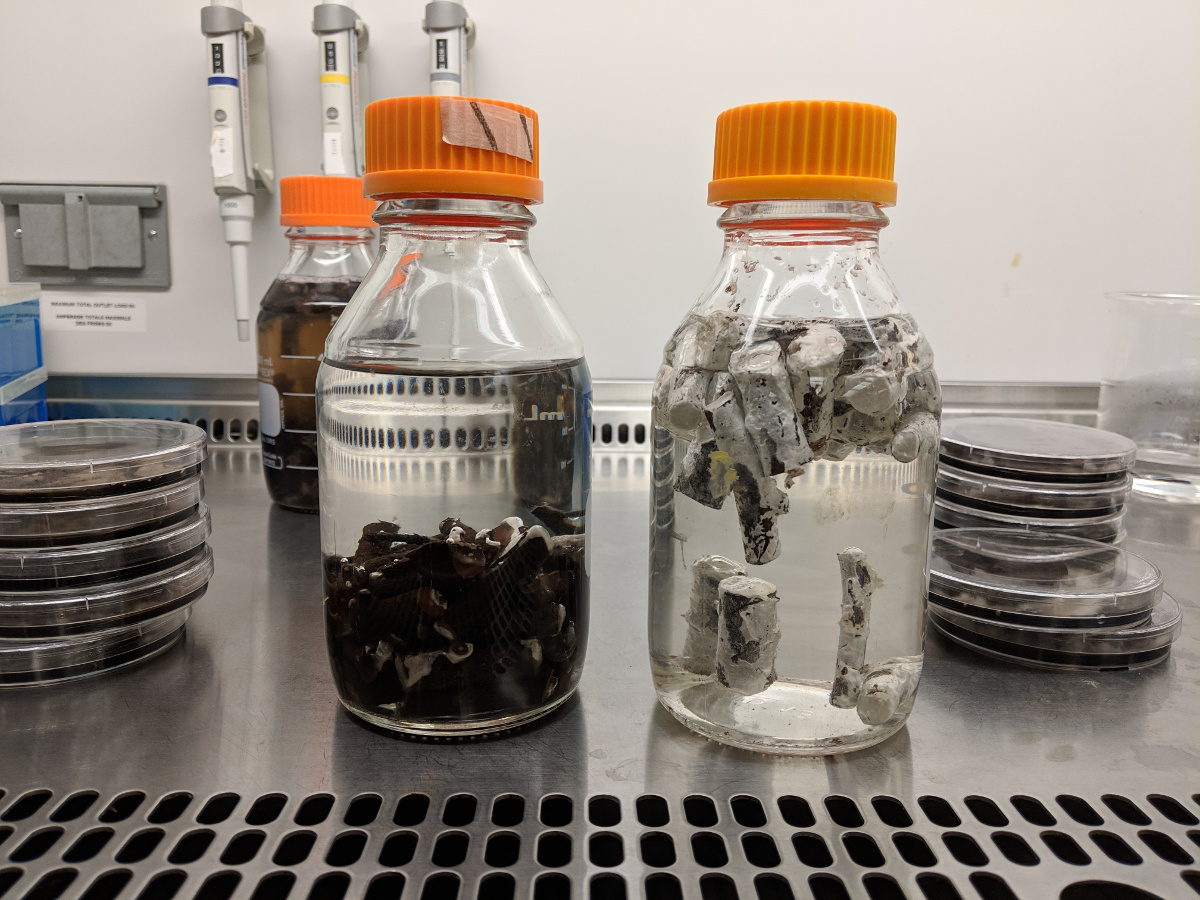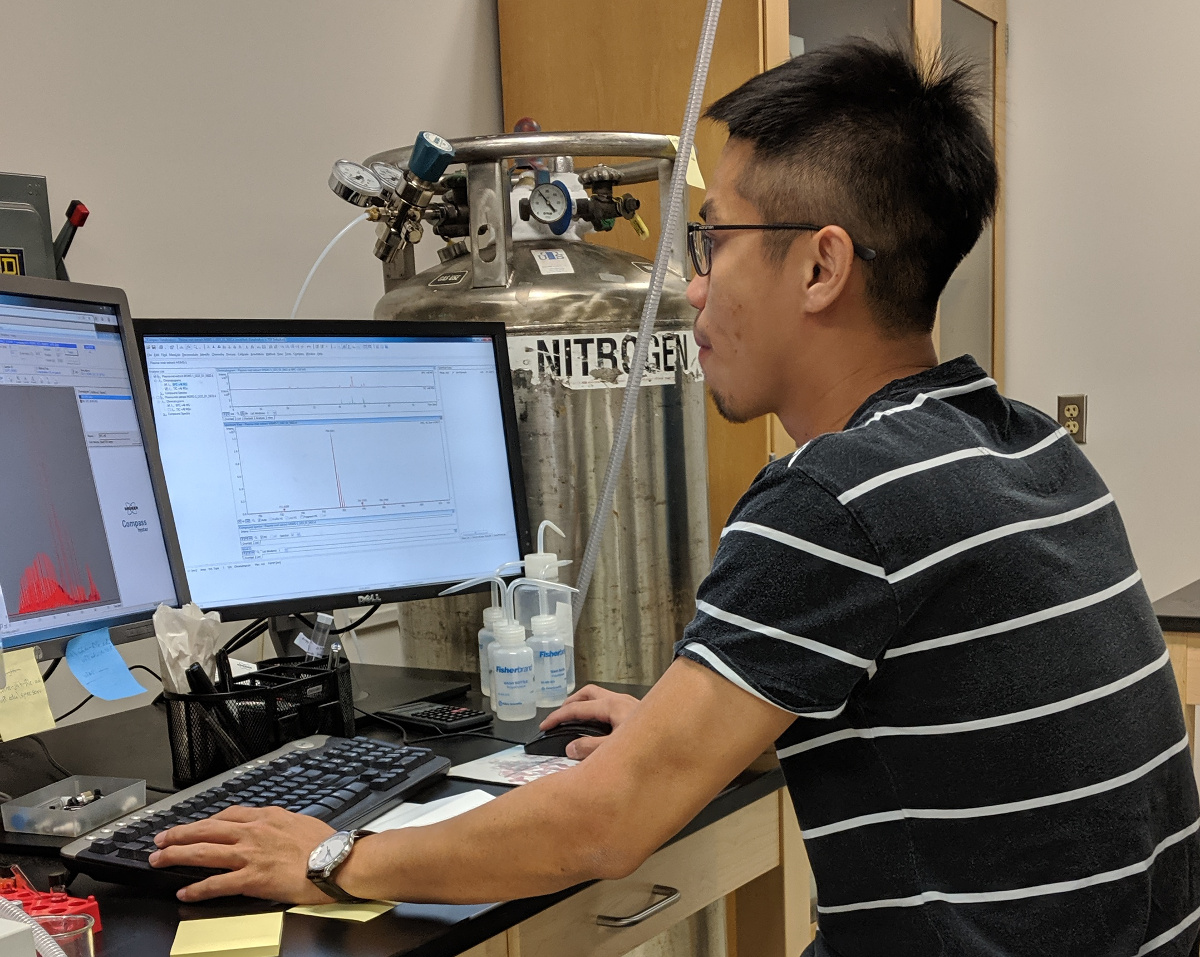The relationships between wood-boring ambrosia beetles and the fungi which they farm as their sole source of food have long been of interest to anyone concerned with maintaining healthy forests. With millions of years of history between the insects and their fungi, it has been generally assumed that each member of the symbiosis was highly adapted to one another. One of my recent study suggests that the metabolisms of the fungi started out working just as they have continued.
Fungi synthesize and accumulate a vast array of structurally diverse molecules such as sugar, fat, and metabolite. Closely analyzing the chemicals present in an organism can be a way of understanding its metabolic ability to convert food (wood, in this case) into new compounds necessary to thrive and reproduce.
 partially (left) and fully (right) colonized branches by ambrosia fungus
partially (left) and fully (right) colonized branches by ambrosia fungus
We chose three separate pairs of species of fungi, with each pair consisting of a beetle-farmed fungus and it’s non-farmed relative. We put samples (fungal spores and mycelia) of the various fungi through a mass spectrometer in order to see exactly what molecules were present.
Surprisingly, the results showed that their metabolisms hadn’t changed since establishing relationships with the beetles. It means that, metabolically, ambrosia fungi have different evolutionary paths to be adopted as the fungal crops.
To be honest, it was a bit unexpected to find no apparent compounds that emerged in ambrosia fungi, given the fact that they have had such a long co-evolution history with the beetles.
 Me and peaks from spectrometer data
Me and peaks from spectrometer data
On the other hand, it does highlight the great divergence of ecological niches and phylogenetic origins of ambrosia fungi. A conserved metabolism inherited from their ancestors which might have been optimized for distinct niches would be a rational and safe strategy for fungi. In fact, the functional redundancy has been shown in many associated fungi in ambrosia symbiosis. It indicates that the nutritional-oriented evolution of fungi to feed the vector beetles may not be that strongly enforced in the ambrosia system.
 Green (ambrosia) and red (non-ambrosia) are not grouping together, suggesting that their lipid contents are not closely related to each other (left). Dots with the same color are clustered, indicating that ambrosia fungi share similar lipid profiles with their non-ambrosia relatives, rather than with other ambrosia species (right)
Green (ambrosia) and red (non-ambrosia) are not grouping together, suggesting that their lipid contents are not closely related to each other (left). Dots with the same color are clustered, indicating that ambrosia fungi share similar lipid profiles with their non-ambrosia relatives, rather than with other ambrosia species (right)
the published paper Huang et al. 2020